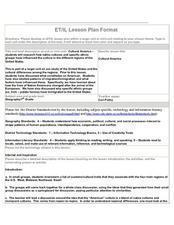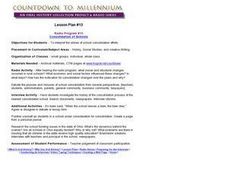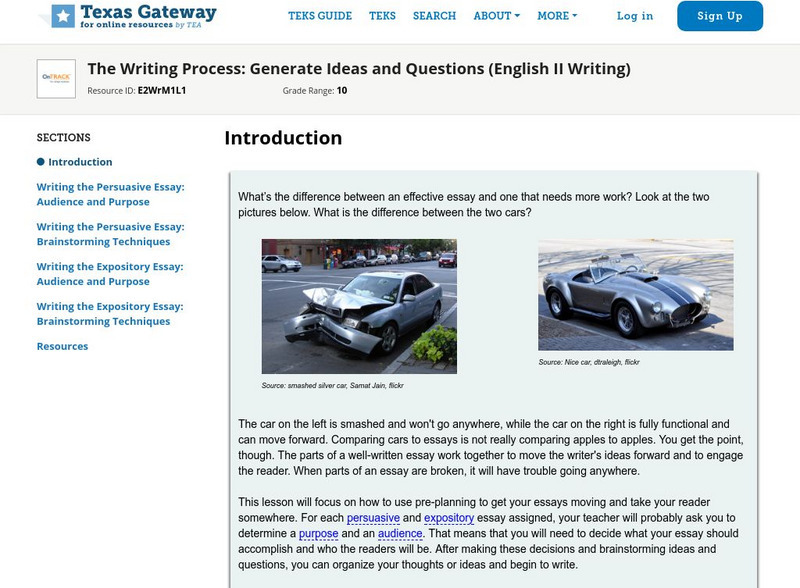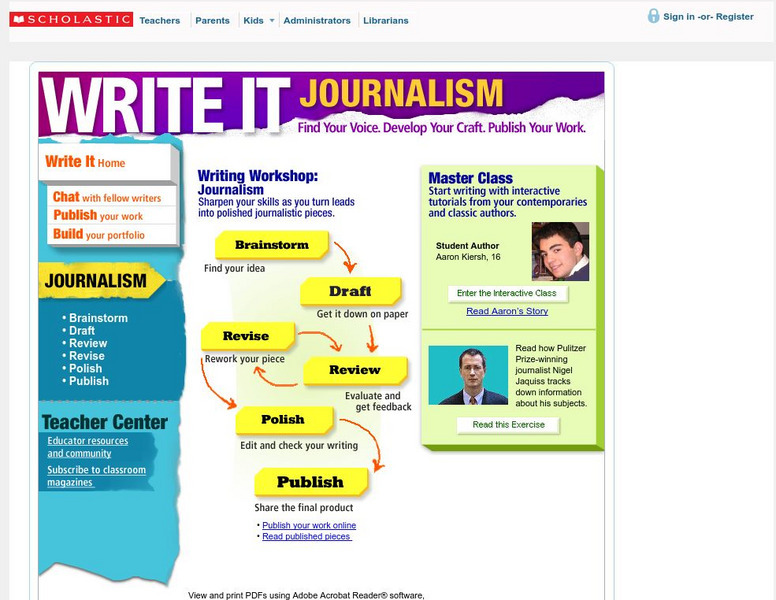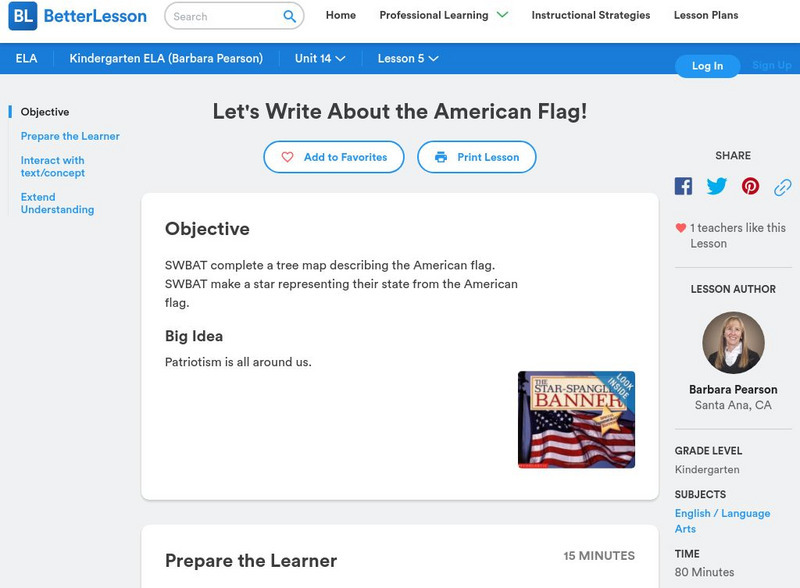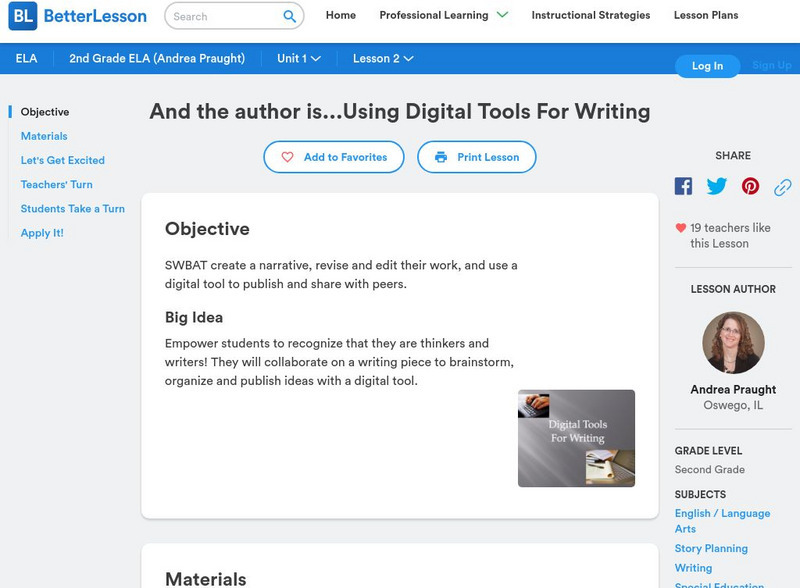Curated OER
30 Good Reasons for Trees
Students create their own book about the role of trees in the environment. They are to come up with a list of 30 reasons they benefit the environment. They hold a publication party to release their book.
Curated OER
Classifying Resources
Students discuss the difference between the three types of productive resources. In groups, they classify and organize examples into the correct category on a chart. As a class, they discuss how each type is used in the production of a...
Curated OER
Types of Groups
Middle schoolers are introduced to the various types of groups in a society. In groups, they create a chart showing the similarities and differences between primary, secondary, and reference groups. Using magazines, they cut out...
Curated OER
Cultural America
Seventh graders investigate the cultural differences that can be found in America. They discuss what it means to be called an American. The patterns of migration to America are discussed with the use of maps and geographical terms....
Curated OER
Remembering Logan Fontenelle
Middle schoolers research Logan Fontenelle and discuss his role in history and importance to the state of Nebraska. Students create individual mock memorials for Fontenelle to be placed at his burial site.
Curated OER
The World Almanac for Kids
Fifth graders identify and compare the features of The World Almanac for Kids in the print form and in the CD-ROM/ on-line form. They predict which format is the easiest to access and the most informative, then draw conclusions from...
Curated OER
A Look At Spending
Students use an outdated budget to examine what the county spends its money on for its citizens. Using county information, they describe how the Board of Supervisors make budget decisions and how it can shape public policy. They also...
Curated OER
The Power of Compounding
Sixth graders examine the concept of compounding interest on invested money. They explore how much interest their money would earn through compounded interest. Students conclude that they should invest early and often.
Curated OER
Radio Program #13-Consolidation of Schools
Students interpret the stories of school consolidation efforts. They explore what social and structural changes have occurred in rural schools. Students debate the plusses and minuses of school consolidation from several perspectives.
Curated OER
Pack Your Bags: Learning about refugees
Young scholars participate in a role playing activity where they become refugees from their home. They participate in a discussion about the reality of survival while in hiding or with only the few things that they could gather and take...
Curated OER
Pre-WWII European Jewish Life Photo Project
Students investigate the individuality fo Jewish lives affected by or lost in the Holocaust and how their communities were affected.
Texas Education Agency
Texas Gateway: The Writing Process: Generate Ideas and Questions
[Accessible by TX Educators. Free Registration/Login Required] A learning module that teaches students how to generate ideas and questions as a part of the writing process in five mini-lessons: Introduction, Writing the Persuasive Essay:...
Alabama Learning Exchange
Alex: The Writing Process: Brainstorming
This lesson will be used to introduce the writing process. Learners will learn about the first step, brainstorming, through webbing activities. Students will also view other learners' work on the Internet. Students will learn how to use...
Texas Education Agency
Texas Gateway: The Writing Process: Generate Ideas and Questions
[Accessible by TX Educators. Free Registration/Login Required] Learn strategies to help you generate questions and ideas about a topic.
Lumen Learning
Lumen: Writing Process: Selecting a Topic
This lesson focuses on selecting a writing topic including your approach to the assignment, understanding the assignment, purpose of the assignment, strategies for finding a topic, and how to narrow a topic to fit the scope and purpose...
Writing Fix
Writing Fix: A Revision Lesson: Sorcerer's Binocular Revision
Take students through the revision process with this prompt and lesson.
Writing Fix
Writing Fix: A Revision Lesson: Zooming in on a Prompt About Friendship
Take your students step by step through the revision process of with this prompt and guide.
Scholastic
Scholastic: Write It: Journalism
This workshop launches will launch students into the writing process. Read advice from Pulitzer Prize winning journalist Nigel Jaquiss, and read work from other students. The Sandwich Critique is an excellent way to peer review. Finally,...
HotChalk
Hot Chalk: Lesson Plans Page: Writing an Autobiography Using Pictures
This is a 4-day activity on how to write an autobiography. Students also learn to take digital pictures of themselves and use them in their writing.
Sophia Learning
Sophia: Paper Writing (I Just Got Assigned a Paper. Now What?)
Work through the writing process by following these ten easy steps. The site also provides tips on brainstorming to generate ideas and using Venn diagrams to organize thoughts.
Better Lesson
Better Lesson: Let's Write About the American Flag
Students will brainstorm adjectives to describe the American Flag and will write two descriptive sentences for homework. Students will also create star art to accompany their writing to show the relationship between words and pictures...
Better Lesson
Better Lesson: And the Author Is...using Digital Tools for Writing
Empower young scholars to recognize that they are thinkers and writers! They will collaborate on a writing piece to brainstorm, organize and publish ideas with a digital tool. This activity highlights different website creations as...
Writing Fix
Writing Fix: Starting & Stopping With Strong Imagery: Revision Strategy
In this instructional activity, students will engage in revising their writings to incorporate sensory images. Students will brainstorm topics of places, away from their home, that are special. Then students will choose and then write a...
Writing Fix
Writing Fix: A Revision Lesson: Focusing on Facial Expressions
Students will learn how to authentically revise their writing with this prompt and lesson plan.



